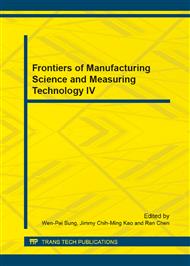p.1257
p.1261
p.1265
p.1268
p.1272
p.1276
p.1280
p.1283
p.1287
The Localization Method of ALV Based on Lateral Dynamics
Abstract:
Localization is a criticalissue for autonomous vehicle navigation. A localization model based on thestable response in lateral dynamics of the vehicle is hard for practicalapplication because of its nonlinearity, multidimensionality and multivariable.A dynamic self - adaptive network, which is able to adjust the scale of theparameters dynamically and has a good regression performance and self learningability, is used as a approximator to modeling the localization of the vehicle.In order to get a higher accuracy in modeling, a Kalman filer is designed forthe input signal such as steering angle and velocity. From the practicaltesting results on our vehicle, it’s indicated that the localization error is less than 1meter. So, the proposed method in this paper is a practicable and efficient onefor application.
Info:
Periodical:
Pages:
1272-1275
Citation:
Online since:
August 2014
Authors:
Price:
Сopyright:
© 2014 Trans Tech Publications Ltd. All Rights Reserved
Share:
Citation:


